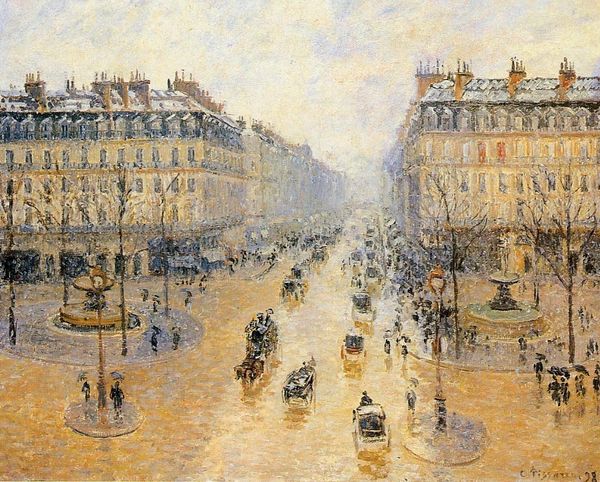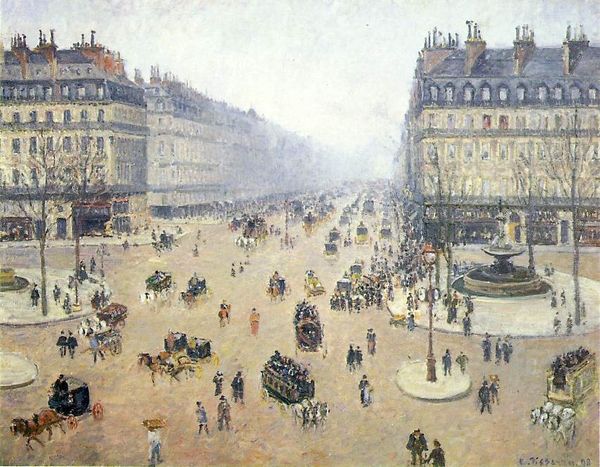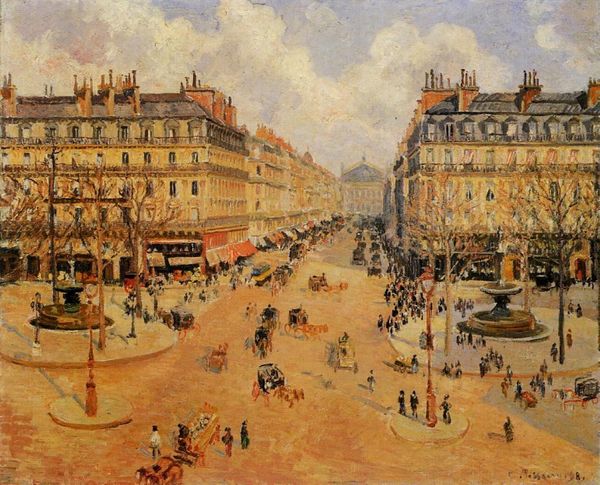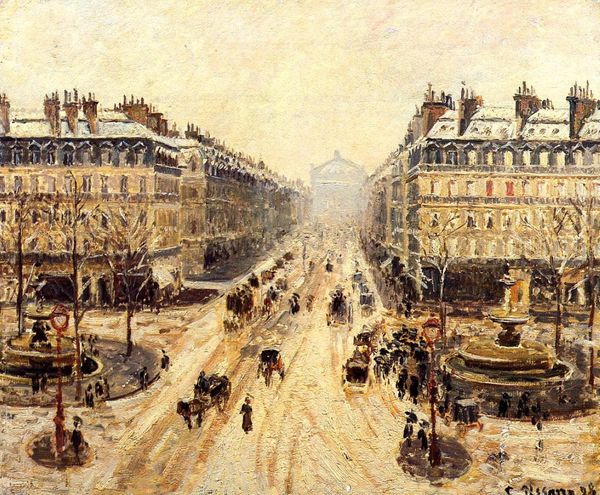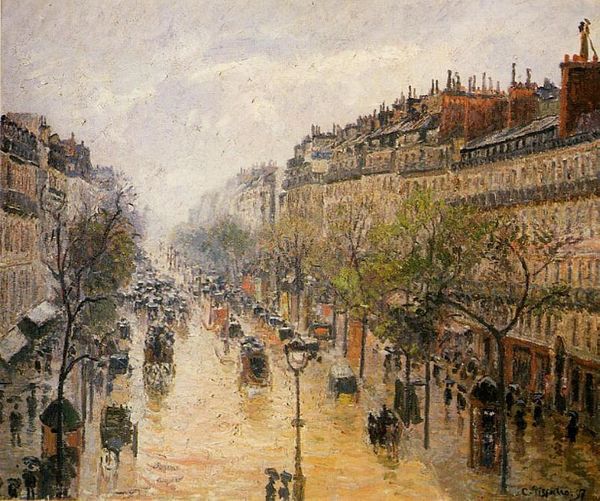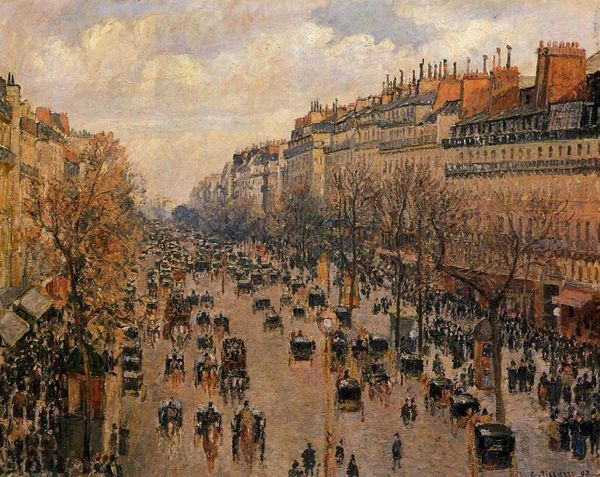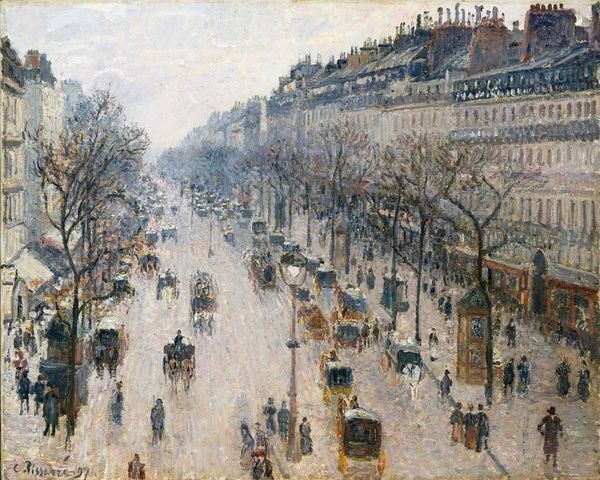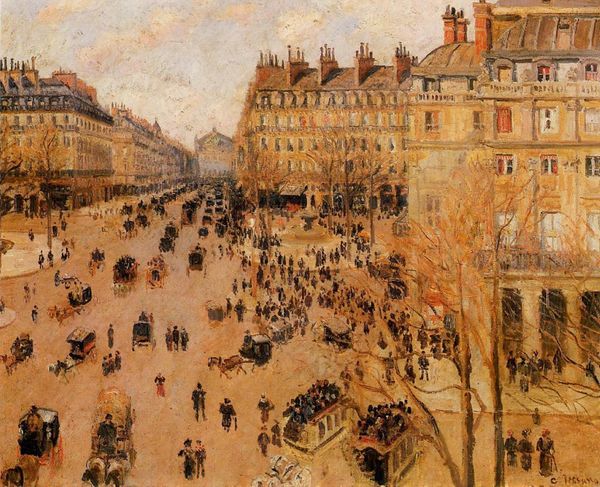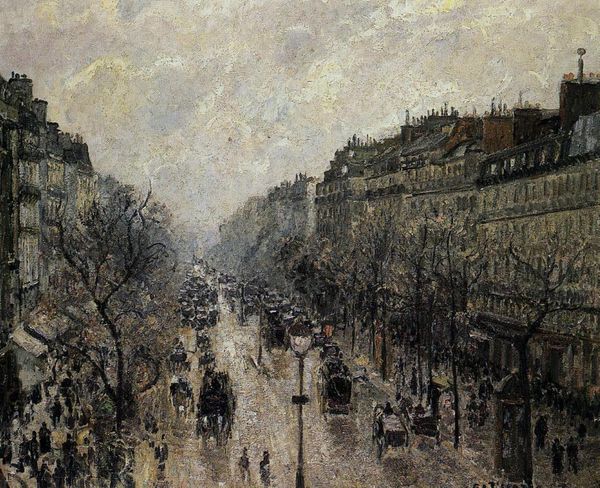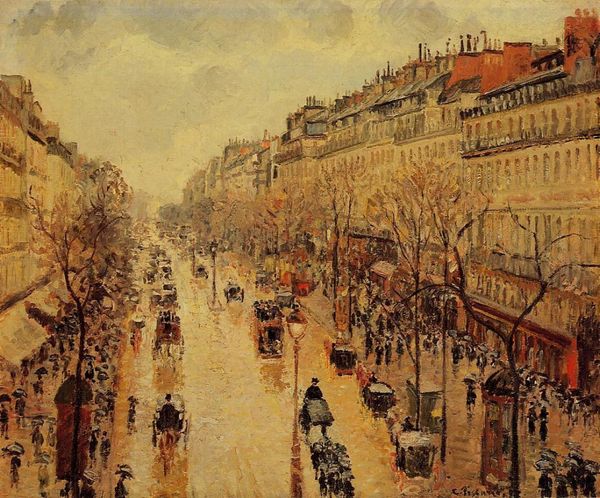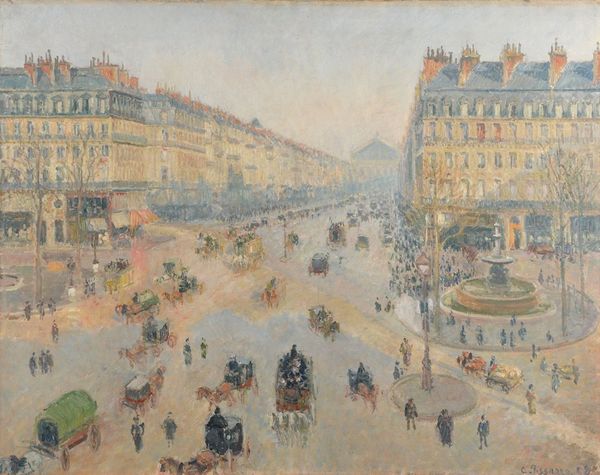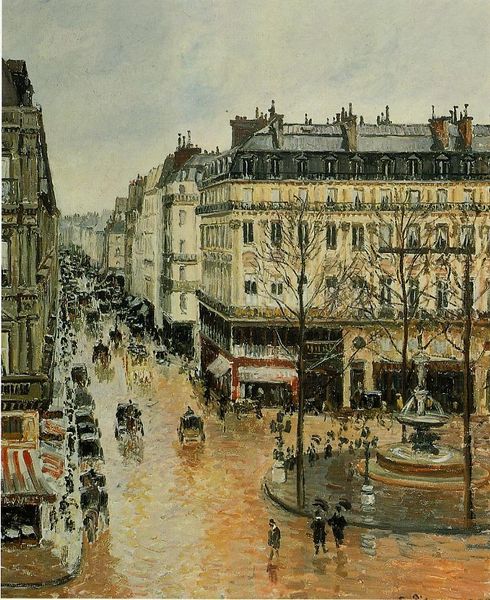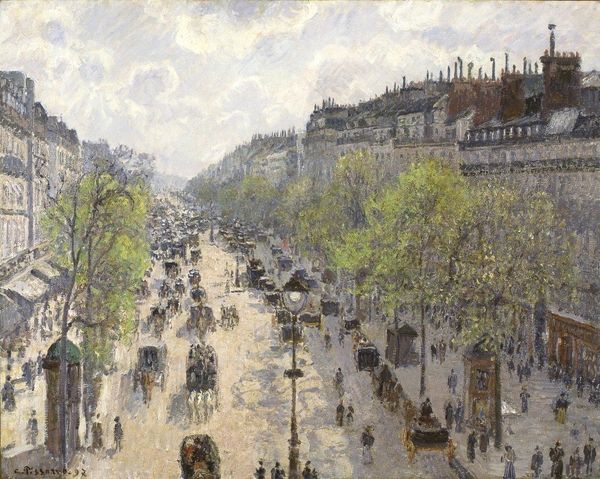
#
abstract painting
#
street view
#
charcoal drawing
#
impressionist landscape
#
possibly oil pastel
#
oil painting
#
city scape
#
acrylic on canvas
#
seascape
#
watercolor
Dimensions: 65 x 83 cm
Copyright: Public domain
Curator: This is Camille Pissarro’s "Avenue de l'Opera: Rain Effect," painted in 1898. He was captivated by the burgeoning urban landscape, painting several views of this iconic Parisian avenue from his hotel window. Editor: Immediately, I’m struck by the pervasiveness of the wetness. The street is practically liquid, reflecting the buildings and the sky above, and even obscuring the figures moving through the scene. Curator: The blurred effect you’re noting is typical of Impressionism, trying to capture a fleeting moment. Pissarro used short, broken brushstrokes, and layers of paint to recreate the atmosphere of a rainy day. Editor: It certainly evokes the specific experience of navigating a city during inclement weather. Note how the light refracts through the rain, turning the avenues into mirrors, distorting hierarchies as wealthy and poor huddle together against the elements. We might think about class and visibility, who gets seen and who disappears. Curator: Right, you can see this as a snapshot of social life within an era of great change, with the rising prominence of the bourgeoisie mixing into Paris’ street life. This painting has several layers: literal paint of course, and those metaphorical levels as well, where meanings of "Paris" or "modern life" get encoded into recognizable images. Editor: Exactly. Pissarro doesn’t shy away from depicting this emerging urbanity, these complex networks that are radically different from agrarian or feudal modes. I’d love to know if anyone back then interpreted the blurring effect to be social commentary. Curator: His work was often considered politically radical for its time, engaging with ideas that spoke for and to working-class Parisians. There’s a density to these impressions of buildings and figures: it reminds us that streets, whether under clear sky or rain, serve as stages for social gathering, commerce, and maybe even a seedbed for societal reform. Editor: So true, and while that political dimension is critical, it also draws me back to the atmospheric, emotional tenor of the work. Pissarro captures the simultaneous beauty and bleakness inherent to a rainy cityscape. The blurring flattens into abstraction, perhaps reflecting our own fleeting presence. Curator: A beautiful, haunting reflection! I’ll be thinking about these perspectives from now on.
Comments
No comments
Be the first to comment and join the conversation on the ultimate creative platform.
